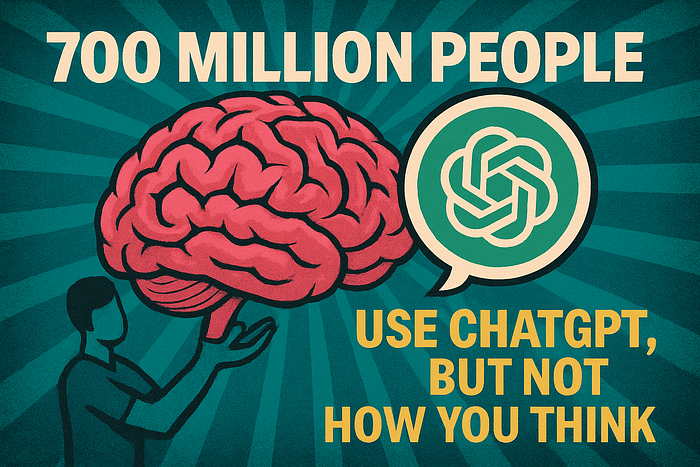
Data Science Tools to Get Started in 2020
Last Updated on July 24, 2023 by Editorial Team
Author(s): Slava Vaniukov
Originally published on Towards AI.

Data science is a discipline that is gaining importance as the world becomes increasingly dependent on vast stores of digital information. It is the study of data involving methods of collecting, storing, and analyzing information to extract knowledge and insights not readily available through traditional data analysis.
Data scientists make use of data science tools that are designed to handle the vast and often unstructured repositories of information at the disposal of businesses and organizations.
If you’re just starting with data science, it might seem to be complicated to choose with what tool for data science to start and which one to use for one or another purpose.
Here we are going to overview the essential toolkit for data science you should have to start.
A data scientist toolkit can contain a variety of data science technologies. These include relational databases, NoSQL databases, visualization tools, big data frameworks, data scraping, and mining tools, programming languages, integrated development environments (IDEs), artificial intelligence, and in-depth learning methodologies. A wide selection of tools for data analysis is required to handle the diverse sources that need to be incorporated by scientists to identify trends and make accurate predictions.
In this article, we are going to discuss the most popular data science tools currently in use. These are the data science tools and techniques that scientists are using to negotiate the complexity of processing big data.
Best Data Science Tools List
Research indicates that these are some of the top data science tools based on the percentage of data scientists employing these solutions. Let’s take a closer look at these proprietary and open-source data science tools available today.
RapidMiner

RapidMiner is a data science platform that provides an end-to-end collaborative platform that enables teams to provide lightning-fast business impacts based on an organization’s data resources. It offers in-depth features for data scientists and also provides simplified solutions for non-technical stakeholders. The tool furnishes users with a platform of over 1500 functions that can be used for unified data preparation, machine learning, and model deployment. Its collaborative features make it an excellent vehicle for enacting full transparency and governance for machine learning. It is one of the data scientist tools that allow for fully automated operation, resulting in productivity and performance gains throughout an enterprise.
R Language

The R programming language is an open-source solution that features an extensive catalog of statistical and graphical methods. These include algorithms to implement machine learning, linear regression, times series, and statistical inference. It is widely used in academic settings as well as by major cutting-edge corporations. The R language consists of five steps for data analysis. They are programming, transforming, discovering, modeling, and communicating. R has a steeper learning curve than some alternatives but offers data scientists a useful tool with advanced analytical functionality.
Python

Data scientists in many different forms widely use this open-source programming language. It is an interpreted, object-oriented, and high-level language that features an easy to learn syntax, built-in data structures, and dynamic typing and binding.
Python supports program modularity and code reuse and is an excellent tool for rapid application development and data science. The standard library of functions and data types are supplemented by many Python-based data science tools, some of which will be discussed later in our list of solutions. Besides that, Python supports an extensive collection of data science libraries, that makes this lang one f the best match for data science programming. This makes knowledge of Python one of the most sought-after skills for data scientists.
Excel

This software solution is perhaps the most well-known of data analytical tools. The majority of computer users have experience using Excel to some degree, even if it is for creating simple spreadsheets. You may be surprised to find that it is a versatile and readily available tool for performing data science procedures. It has limitations in the number of rows and columns that may make it inferior for big data applications, but are often sufficient for investigating the real data that impacts business every day. Activating Excel’s Analysis ToolPak infuses Excel with more advance analytical capabilities.
Anaconda

Here is a complete, open-source data science package with over six million users on Linux, macOS, and Windows machines. It is easy to download and install and offers users over 1,000 data packages and a virtual environment manager to make it easy to get up and to run.
SQL

The Structured Query Language (SQL) is familiar to a wide range of computing professionals, primarily those working with relational databases. Knowledge of SQL programming is one of the most critical skills for individuals engaged in data science. Relational databases are still one of the important enterprise repositories information in business and industry. SQL enables direct interaction with data, removing the need to copy it before processing, which streamlines analysis.
Tensorflow

Here is one of the tools for data science that is based on the Python language. It is a framework for machine and deep learning developed at Google Brain. The tool assists data scientists working with neural networks used to handle multiple data sets. Each new release of the tool expands its capabilities. Here is a definitive guide to start with Tensorflow.
Keras
Another Python library that can be used for data science is Keras. It offers a straightforward approach to building neural networks and modeling. The extensible package makes use of TensorFlow and the Microsoft Integrated Cognitive Toolkit. Keras employs a minimalist approach that simplifies development.
Installing Keras with Tensorflow
# Requires the latest pip
pip install --upgrade pip# Current stable release for CPU and GPU
pip install tensorflow# Or try the preview build (unstable)
pip install tf-nigh#sudo pip install keras#git clone https://github.com/keras-team/keras.git#cd keras
sudo python setup.py install
Scikit-learn

Python programmers can increase productivity and introduce machine learning into production systems with the sci-kit-learn library. This tool was developed as a Google Summer of Code project in 2007 and is built on top of Scientific Python (SciPy). The primary purpose of the library is data modeling. Some of the modeling groups included in the library are used for clustering, cross-validation of supervised models, and parameter tuning to get the most out of models.
Tableau

Tableau is an end-to-end data analytics platform that elevates the power of your data. It allows you to prep your data and performs drag-and-drop visual analytics in its Desktop. The tool can be used as an online application or installed on your hardware for enterprise-scale analytics.
Apache Spark


This open-source unified analytics engine is ideal for processing big data and implementing machine learning. The Spark Core API makes use of the Python, R, SQL, Scala, and Java languages. It was specifically engineered for performance and can be up to 100 times faster than Hadoop for processing large scale data.
BigML

Lesser-known than other cloud computing offerings is machine learning as a service (MLaaS). BigML is an example of MLaaS that provides an easy and understandable way for data scientists or general users to use advanced machine learning techniques. Its cloud-based GUI can be accessed via a free account or a premium subscription depending on the needs of individual organizations. REST APIs are available to augment the functionality of the platform. Workflow automation and reusable scripts make it possible to fine-tune hyper-parameter models developed with the tool. A large gallery of models and datasets are available to kickstart your usage of BigML.
MATLAB

This proprietary data science software is a well-known tool for statistical analysis and numerical computation. It provides an iterative, desktop environment with a programming language that facilitates performing matrix and array mathematics. MATLAB is an example of tools for traditional data analysis that also have great utility when used by data scientists. The tool can be used to quickly model neural networks and create visualizations of complex statistical information.
Wrapping Up
As you can see, there are many tools available for data scientists. Some simply assist with data visualization, while others can be used to construct neural networks and make use of machine learning technology. Based on the scope and focus of requirements, one of these solutions should fit the needs of the data scientists in your organization.
Join thousands of data leaders on the AI newsletter. Join over 80,000 subscribers and keep up to date with the latest developments in AI. From research to projects and ideas. If you are building an AI startup, an AI-related product, or a service, we invite you to consider becoming a sponsor.
Published via Towards AI
Take our 90+ lesson From Beginner to Advanced LLM Developer Certification: From choosing a project to deploying a working product this is the most comprehensive and practical LLM course out there!
Towards AI has published Building LLMs for Production—our 470+ page guide to mastering LLMs with practical projects and expert insights!

Discover Your Dream AI Career at Towards AI Jobs
Towards AI has built a jobs board tailored specifically to Machine Learning and Data Science Jobs and Skills. Our software searches for live AI jobs each hour, labels and categorises them and makes them easily searchable. Explore over 40,000 live jobs today with Towards AI Jobs!
Note: Content contains the views of the contributing authors and not Towards AI.
















